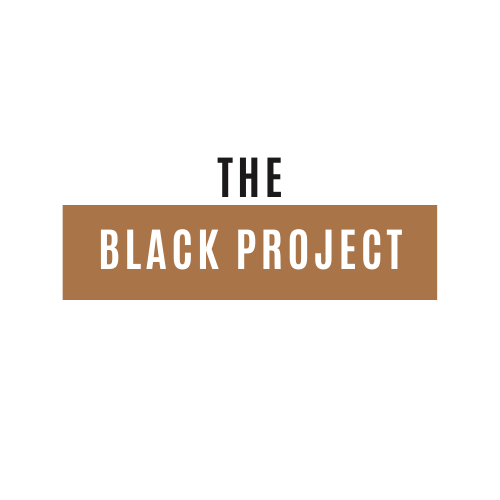Theatre Review: Now, I See; Theatre Royal Stratford East - Everything theatre can be.
Tendai Humphrey Sitima, Oliver Alvin-Wilson, and Nnabiko Ejimofor in Now, I See. Image Credit: Camilla Greenwell.
⭑⭑⭑⭑⭑
Theatre. One of the performing arts, a place to step outside yourself and let go, a place to look within yourself and begin to understand. A place to laugh, to cry, to learn, to ask questions and have questions answered. A place to feel, a place for release, a place that entertains and educates. It is exceptionally rare that a piece captures everything theatre can be. Now, I See is that piece.
Now, I See is the second instalment of a trilogy being written by Lanre Malaolu that explores Black British identity as men, and the different facets and complexities that come along with it. The story is of three brothers, one of whom has passed away from sickle cell disease, and the other two long-estranged but pulled back together by his passing. The story is told through the lens of grief but it’s about so much more than that. Family, how the children we were become the adults we are, the struggle of living with chronic illness - whether you are the one with the illness or not, masculinity and what that looks like through the lens of Blackness. But most importantly, it’s about healing. It’s about finding peace within and believing you deserve it.
Listen. I am going to tell you why I loved this piece. I am going to tell you how Lanre Malaolu has woven together a piece that captures so perfectly the way it feels to be alive, with pain and anger and love and laughter all co-existing in the same moments. I am going to tell you that the use of movement and sound elevates this piece from simply a theatre piece to a true example of performance art. I am going to tell you how the vulnerability of Nnabiko Ejimofor and Oliver Alvin-Wilson, and the quiet yet constant intensity of Tendai Humphrey Sitima combined to create the most engaging performances I’ve seen this year, the feeling they created washing over me. But please know, nothing I say is going to quite capture what it felt to experience this show.
Not just the writer, but also the director and choreographer, Lanre Malaolu’s creativity and style of expression runs through the veins of this piece. When we interviewed him during rehearsals, he spoke of the writing process and said this piece “flowed out of him.” As though he wrote it from outside himself, and when he was done he opened his eyes. That is exactly how this piece feels. It flows. It’s happening on the stage in front of you, this isn’t immersive theatre, and yet it feels like you sink into it, it’s happening all around you, washing over you.
Much of this feeling can be attributed to the use of movement. You know when you feel too much and words just don’t seem to get it all out? So you run, or you go to the gym, or you dance, or you jump and scream and suddenly it feels like you said more than you ever could have with words? That is what Lanre has captured - the feeling of too much, the act of movement, the release and relief. All three of the performers move beautifully throughout, and the way they move tells you so much about their characters - Tendai’s moves as Adeyeye feel weighted with a sense of desperation, Oliver’s as Kieron are tight and controlled but in a way that is restrained and angry, where Nnabiko as Dayo is just as controlled but it feels looser, fluid, but sad where Kieron feels angry. To translate so much in the way you move is no mean feat, but the work in the rehearsal room has more than paid off.
The movement of the bodies translates to the staging, the use of light, and the use of sound. The staging is exceptionally simple. A tank of water sits at the front of the stage, three long halogen lights hang over a square table, and layers of ruched gauze stretches horizontally across the top of the stage creating the illusion of a wave. When the light hits the water it reflects above the arch of the stage onto the ceiling, and use of light and shadow makes the ruching appear to be moving. It feels as though the whole stage is moving. Not moving. Breathing.
What I’ve not captured yet in this review is how funny this show is. It’s rooted in a sibling dynamic, the natural competition that comes from that and how inherently silly it can be is sold perfectly by Nnabiko and Oliver especially. There are flashbacks to childhood and let me tell you, a grown man in a suit pretending to be a child dancing to the soundtrack of an animated classic? It’s never not going to be funny. The dialogue is sharp and witty, and it’s delivered with expert comedic timing by the cast. Whilst it is dealing with real heartache, you laugh for far more of this show than you don’t.
Every element of this piece is so considered, handled with such care, and woven together with a respect for the creative vision that has led to art being born. Lanre wrote, choreographed and directed art. Oliver, Nnabiko and Tendai became it. When it finished I found myself sat, still looking at the stage and the title made total sense because yes. Now, I See.
Now, I See is running at Theatre Royal Stratford East until June 1st 2024, with a relaxed performance on May 22nd, a BSL interpreted performance on May 30th, a captioned performance on May 31st, and an audio described performance on June 1st. Tickets available here.


